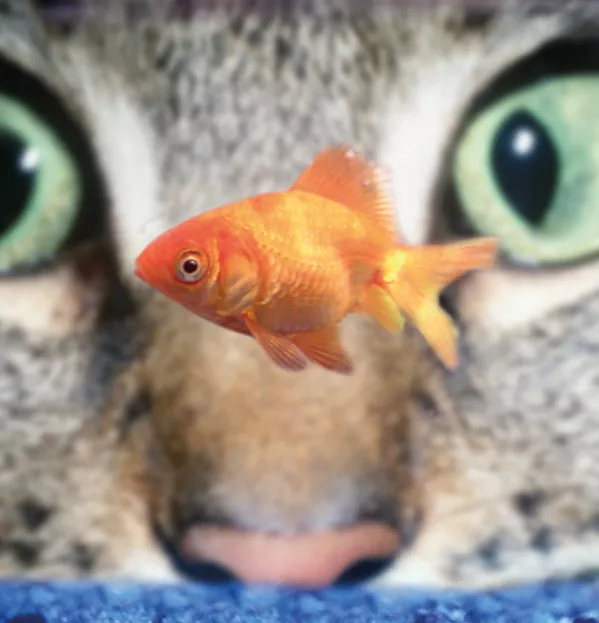A teacher’s hunt for evidence on...student concentration

It can often seem that students have the concentration levels of Dory from Finding Nemo. They fidget, look out of the window, lose focus.
As a teacher, that can be dispiriting, causing you to question yourself and the students, and to wonder what exactly you can do about it.
But estimates of an average human attention span range from a mere eight seconds to a titanic 20 minutes - it might not be your fault. So, is it possible to strengthen our students’ focus and concentration?
For more than a century, researchers have been grappling with concentration, focus and remembering. Back in 1890, the godfather of psychology, William James, wrote The Principles of Psychology - Volume 1 (bit.ly/Principlesofpsychology). In it, he described how maintaining concentration was a skill of geniuses: “Geniuses are commonly believed to excel other men in their power of sustained attention…every subject branches infinitely before their fertile minds and so, for hours, they may be rapt.”
Most teachers would, no doubt, be happy to accept a 15 to 20 minutes of concentration, never mind hours of rapt attention. But what is clear from the research is that we are not necessarily the cause of wandering attention in the classroom.
There is a legion of barriers that can inhibit our students’ concentration. Everyday factors such as tiredness can make a difference. Other environmental factors, like too much noise or visual stimulus, can disrupt thinking and break our students’ fragile concentration spans. There is consistent research on how technology is fuelling distraction among our students.
Meanwhile, the teenage brain, as evidenced by neuroscientists such as Sarah-Jayne Blakemore (whose Ted Talk you can watch at bit.ly/TedTalkAdolescent), is experiencing a chaotic whirlpool of development, with the prefrontal cortex - the region of the brain responsible for planning, decision-making and focus - in the eye of the storm. It is no surprise, then, that students exhibit a limited attention span. Their changing brain makes them much more interested in their friends than their physics class.
Don’t forget working memory
For some children, their lack of concentration can indicate specific learning issues. Attention deficit hyperactivity disorder, or ADHD, is a commonly known and diagnosed problem for some children. Less well understood are issues for children with a poor “working memory”. Working memory is our ability to juggle information in the mind in the short-term, such as listening to instructions while making notes.
Of course, in the classroom this is vital for learning and concentration. Professor Susan Gathercole and Dr Tracy Packiam Alloway have written a classroom guide called Understanding Working Memory (find it at bit.ly/UnderstandingWorkingMemory), which is considered an essential read for teachers. It is important to remember the problem may not lie with your teaching. If we want to maximise the attention of our students, we need to be clever. When we plan what we teach, we need to first set the bait and lure them in like a fish on a line.
Children and adults are motivated by goals and a sense of purpose. We are affected, consciously or unconsciously, by how we feel about those goals. If the work is too hard and the goal is out of reach, our perseverance weakens and our concentration subsequently wanes. If the work is too easy, we can feel unchallenged and quickly lose interest. Our classroom tasks therefore need to have a Goldilocks quality: not too easy and not too hard, but just right.
We can help our students to see the value in attainable short-term goals, such as impressing their friends and us with a great answer or performing well in an upcoming examination. Then we can help them match these to their long-term goals, such as a fulfilling career beyond the school gates.
Be careful with how you present information. Simply adding images to liven up a text can prove a distraction to attention and what our students remember. A Learning Scientist blog by Megan Sumeracki highlights why “dual coding” - the pairing of images with text - could prove too much of a good thing (bit.ly/toomuchofagoodthing).
We should be wary of information overload. By trying to make the lesson memorable with, say, a fun YouTube video, we may notice our students concentrating but then all they may remember afterwards is the funny video and they may forget what we actually wanted them to learn in the first place.
The Hungarian psychologist Mihaly Csikszentmihalyi has famously described a state of “flow”, that is to say, being in a state of intense concentration, totally immersed in an activity. It can perhaps be glimpsed when our students are sat in a safe, distraction-free classroom with a trusted teacher, tackling a Goldilocks-quality challenge. With clear goals, supportive feedback and intriguing academic content, we can all hook them in.
Can we transform our students from goldfish into geniuses by helping them find their flow? By paying close attention to creating the conditions for increased concentration, we could all give it a good go. As Dory advises Nemo, “just keep swimming, swimming, swimming”.
Alex Quigley is director of Huntington Research School in York. He is the author of The Confident Teacher, published by Routledge
You need a Tes subscription to read this article
Subscribe now to read this article and get other subscriber-only content:
- Unlimited access to all Tes magazine content
- Exclusive subscriber-only stories
- Award-winning email newsletters
Already a subscriber? Log in
You need a subscription to read this article
Subscribe now to read this article and get other subscriber-only content, including:
- Unlimited access to all Tes magazine content
- Exclusive subscriber-only stories
- Award-winning email newsletters